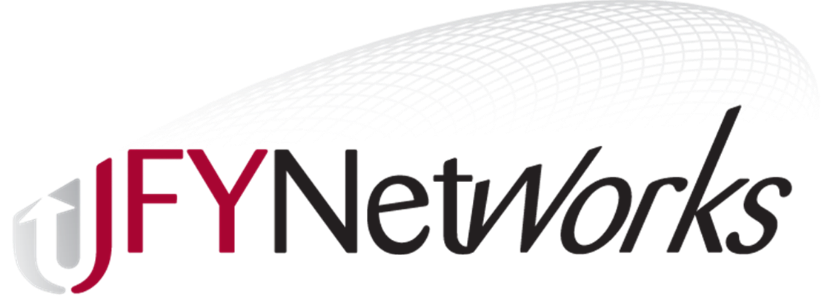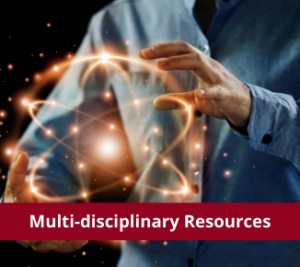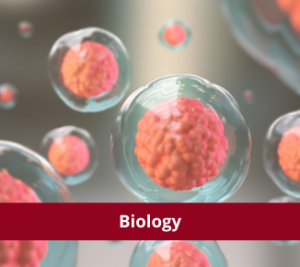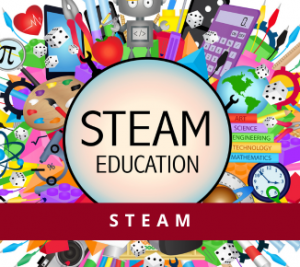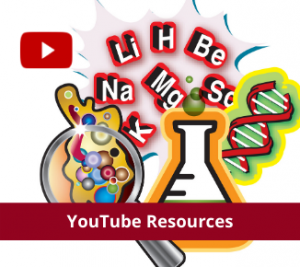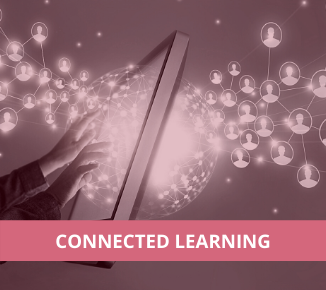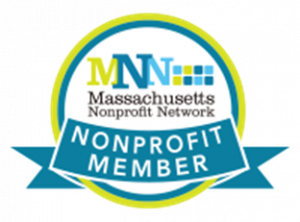Free Science Resources
Updated 4/2023
A multi-disciplinary treasure trove for teachers, students and parents
JFYNetWorks provides online resources to support remote learning in all core subject areas. To support the STEM curriculum, we have developed this annotated guide to science resources. It lists free resources in all domains of science, and details activities, multi-media lessons and teacher guides for all levels. We hope it will be helpful to teachers, students and parents.
Multi-disciplinary Resources
Multi-disciplinary Resources
Chemistry
MULTI-DISCIPLINARY RESOURCES
Physics
Physics
-> The Physics Classroom
-> MIT Blossoms
-> The Physics Front
-> The Science Spot (Physics)
Engineering
YouTube Resources
Bozeman Science
This website has videos that cover important concepts in the following areas: high school biology, high school chemistry, high school earth science, high school physics, Anatomy and Physiology, AP Biology, AP Environmental Science, AP Physics, and AP Chemistry. Major science subject areas are also organized by Next Generation Science Standards. The videos (on YouTube) have clear, colorful explanations, and some videos have accompanying worksheets contributed by teachers. The Wonder of Science website also connects to the wonder of science. There are sections of assessments and videos organized by Next Generation Science Standards. The website also features teacher resources. This is a great site for students that have limited technology access. The videos connect to YouTube and the assessments and worksheets are pdfs.
Christa McAuliffe Center for Integrated Science Learning
A project of Framingham State University, this website is a curated list that will help parents, students and educators looking for free resources they can use via remote learning. These resources are at a variety of levels, from pre-k to high school. The site has 5 parts with free activities. A key section is STEM at Home. This section is a curated list of free resources. When you click on a topic, you will see a list of resources with a short description. For each resource the descriptions give you a basic summary, type of activity, area covered, and appropriate age group. This is a work in progress and users should check periodically for updated resources. There is a wide variety of activities including digital labs, interactive lessons, demos, videos animations, and tutorials. This site also includes math activities that teachers can assign and parents and students can work through together. There is also a section of science sites in Spanish and Portuguese. STEM at Home also lists videos, webcasts, and WGBH broadcast options. Another section of the website is the DIY Universe. In this section you can create your own exhibit or multi-media show in three areas: Stars, Solar Systems, and Origin/History of the Universe. Users can access these resources as a parent, teacher or student. Another section, Perspectives of Earth, provides images from the International Space Station with linked educational activities. Activities are organized by UN Sustainable Development Goals. Learner and educators can explore the UN Sustainable Development Goals in 6 areas: Planet, People, Dignity, Prosperity, Justice, and Partnerships. In the Events section, anyone can either register for live presentations of the monthly Astro Night or view the session later on the Center’s YouTube channel. Last, but not least there is a link to Webinars for Teachers that will help teachers and parents hone their remote learning skills. This is one of the best websites for easy access to a wide variety of resources.
The Source Book for Teaching Science
This is a collection of free resources that provides everything from illustrations and simulations to exercises you can use with your students. Although some of the links are inactive, there are plenty of resources to use. The website gives resources in all the major areas of biology. There are simulations, illustrations and online textbooks in each area. There are also informative online spreadsheets with data that can be used as the basis of many assignments. This site includes lesson plans that teachers can use to create online assignments for their students. Although this website emphasizes biology, there are resources for chemistry, physics and earth science. There are many resources to choose, but teachers will have to pick from a long list to find what will work best for their students.
National Science Foundation
This website provides resources in all areas of science. The links take you to a list of resources for each area. One advantage of this website is that it identifies the appropriate grade range for many sites. This site has organized activities in 12 different areas: Arctic & Antarctic, Astronomy & Astrophysics, Biology, Chemistry & Materials, Computing, Earth & Environment, Education, Engineering, Mathematics, Nanoscience, People & Society, and Physics. Some of these listed resources, such as Cells Alive or Chem4Kids have been around a long time, but that doesn’t mean they still don’t have valuable information. Many activities are available in different languages. This site is a vast collection of resources. Teachers can choose and assign specific activities to their students.
PBS
This website has a very large collection of resources and activities in almost every subject. Once you choose an area, you can filter by grade and type of activity to narrow your choices. There are complete interactive lessons and activities. Most activities have support materials so that teachers have a complete assignment for students. Activities are varied and there are games, multiple choice and short answer questions for students. Teachers can create classes and give students assignments. Teachers can view student activity and these reports can be exported to Excel. The program can be fully integrated with Google classroom.
National Science Digital Library
This is a large collection of resources. Activities vary and some activities are more comprehensive than others. The teacher can filter by grade, standards and subject. Although this website is known for science, teachers can choose activities in life science, applied science, physical science, mathematics and history.
CK-12
You can enter this site as a teacher or a student. If you are a teacher or a parent, you should look at their webinar which gives advice on using their program. This website includes resources in science (starting at grade 1), math (grade 1 through college), language arts, and social studies. Teachers can use the Flexbooks. These are online textbooks that have accompanying activities. There also individual activities and videos available. For example, students can move the chromosomes to display the phases of meiosis. Although this site does not filter by Massachusetts standards, you can use the Common Core filter. This site is very comprehensive. [account creation required]
Online Teaching Resources You Can Use – A List Compiled by NSTA Collection
These resources have been vetted and recommended by the National Science Teaching Association. You can browse from their list of websites and Google docs.
Khan Academy
If you prefer your students to work with a more traditional method, then choose Khan Academy. Khan Academy provides a very comprehensive selection of short videos and accompanying online exercises for some topics. Khan Academy’s science offerings cover Biology, Chemistry and Physics with separate courses for AP science. The videos are lecture style and the video is basically an explanation in a mini-lecture. It’s not for every student, but some students really do better with Khan’s straightforward approach. Teachers can enroll classes and check on student progress with reports.
BIOLOGY
LabXchange
This website is sponsored by Harvard. You have to sign up, but it’s free. There are online learning assets, including videos, assessments, and simulations. The focus is biology, but there is a good selection in other areas such as Chemistry, Physics and Global Health. If you are looking for activities to help understand COVID-19, this website had many activities. Teachers can create online classes and teach lab skills remotely. The virtual experiments and simulations might be particularly useful for teachers seeking to provide continuity through hybrid and remote learning.
Biointeractive
This is a large collection of resources. You can filter by level, activity, and topic. Activities include videos with a pdf teacher guide and student handout. There is also a small section on earth science.
Concord Learning Center
Concord has a small collection of engaging biology resources. Some of these activities are simulations that teachers can use to design a lesson for their students. If you have your own webpage, you could post the links to the activities and also add questions. Other activities already have accompanying questions. Please note that a few activities do not function, so be sure to preview them first.
Busch Gardens Resources
This website, a joint effort between Busch Gardens and SeaWorld, has a variety of activities. Although it features K-12 activities, many of the activities are geared for lower grades. Both teachers and students can access lesson plans and activities. In classroom activities, there are workbook style lessons. Teachers can download these activities and assign them. Teachers can substitute class discussion sections with written responses and video conferencing. There are also teacher guides in many areas that are online textbooks with readings and assignments. Another useful, dynamic section is Saving a Species. This section has many videos and a teacher toolbox goes with the videos. Animal Bytes has one-page fact sheets on interesting animals. Teachers can use these sheets to spark interest in research projects. The videos are on YouTube, so students can watch these shows on their tablets, laptops, phones or smart TV.
CHEMISTRY
American Association of Chemistry Teachers
This website includes complete activities for teachers that make great online lessons. In order to access many of these activities, you have to be a member of AACT. There is still a wide variety of activities that you can access without membership here. Some of the activities are better for classroom work but there are activities that feature simulations. You can give directions to your students to complete the activities on their own or you could do this work as a group by Zoom or Google Meet. The advantage of these activities is that they include a teacher guide and student activity sheet. These activities cover 14 different areas of high school chemistry and there are lessons for your students. There are also activities for middle and elementary school students.
General Chemistry Interactive Solutions
This website includes a collection of resources that you can use to teach topics. There is good information, but many of the activities are not as dynamic or interactive as other websites. Please note that these activities use Adobe Flash (support ends 12/31/20) and may not work on all devices.
Concord Learning Center
This website is similar to Concord’s biology page. There are many resources for teachers to use. These activities vary. Some are simulations and other activities are meant for classroom work (although some activities might be done at home through teacher instruction). Lessons vary from activity general plans to complete lessons with accompanying guides for students and teachers. To access all of the website’s features, sign up for the free membership.
PHYSICS
The Physics Classroom
This website has a large collection of resources for teachers and students. There are many links to varied resources that include online textbooks, interactive activities, physics videos and complete physics lessons (Concept Builders) with varied activities. The website also includes a review section, ACT Science tutorials, Curriculum Corner worksheets, NGSS Corner, Teacher Toolkits and the Mind on Physics phone/computer app. Teacher accounts are available, which allow teachers to access more features such as task tracking.
MIT Blossoms
This is a very large collection of resources that varies in quality and functionality. Some activities are excellent, but others are either non-functional or old-fashioned. Since this is a large collection of sites, it is definitely worth investigating. There is a new guide for Project -Based Learning and activities. Some activities require a sign-up to use. There is a short description of each website, so you can quickly decide if this activity would work well for you.
The Physics Front
The Physics Front has complete lessons and online activities. You can browse by course, level, or topic.
The Science Spot
Although this is a very basic website, you might want to use it if your students have limited access to online curriculum. Some of the materials are simple to download, so students could access the work easily on their phones.
ENGINEERING
Engineering Activities for Kids (when Under Quarantine)
This is a collection of activities that students can do at home. This site is useful for teachers looking for activities to assign or parents trying to engage kids in stimulating work.
Teach Engineering
This is the companion website for teachers. Teachers can find lessons plans to download and activities for their students on a wide variety of engineering topics. In this large collection of resources, you can filter by subject, topic, lesson type and grade level. You can also choose a curricular unit with multiple activities. There is a time estimate and description for each activity. Activities are available in other science disciplines.
Try Engineering
Students can explore games, activities, robotics and engineering careers. There is information on university engineering programs and summer institutes.
U.S. Patent and Trademark Office
This website emphasizes practical activities that teachers can assign. The activities focus on creating inventions. There are separate activities that focus on many high interest topics such as the relationship between engineering and tattoos or 3-d printing. The website includes sections for kids and teens.
STEAM
STEAM Resources from the University of Denver
This website from the University of Denver has many resources for teachers. There is general information on STEAM curriculum and why STEAM is important. The most useful section is 30 STEAM resources for teachers. This section has 30 links that will be very helpful for teachers building a STEAM curriculum. Some links have information on project-based learning. There are outlines for implementing a STEAM curriculum, and project suggestions from elementary through high school. (A few links are inactive and some are commercial.) Overall, the site offers good information and resources for any STEAM teacher.Professor Dave Explains (Science and Math)
Professor Dave offers short simple video explanation on a wide range of topics in science and mathematics. These videos are mini-lectures. Although the videos are good, teachers will have to develop accompanying lesson plans or pull activities from another source.
Crash Course(Science and other subjects)
These are short, easy to understand explanations on many topics. You can study biology, chemistry, engineering, math, history and many other subjects. They are colorful and easy to understand. The videos have caption options, which will be helpful to ELL students.
The Amoeba Sisters(Biology)
Two sisters (a former high school teacher and a former program analyst) started this channel to demystify science. These are fun, colorful videos that your students will enjoy. Some of the videos may be suitable for middle school students. They also have a website that has GIFs, handouts, resources, and science comics. You can also access the videos from this website.
High School Biology Lectures (Biology)
If you prefer more traditional lectures, try this channel. This is not a complete course in biology, but there are 28 videos on YouTube. The narrator has some interaction with the students, but mainly lectures. The videos have good graphics and they vary in length. No videos have been added to this channel in several years, but there is still some valuable content.Stanley Bergkamp (Physics/Chemistry)
These videos focus on higher level physics and chemistry topics. The teacher covers AP Physics, Honors Physics and AP Chemistry. These videos are traditional classroom lectures and each video is 45 minutes to an hour. The explanations are good, but they are not flashy. You get a high-quality detailed lecture on physics and chemistry topics. This will appeal to students who like detailed explanations and prefer a lesson that mimics a classroom setting.
James Dann (Physics)
James Dann gives short explanations on a variety of physics topics. The videos are mini-class style lectures, whiteboard demonstrations, students performing experiments and physics demos.
Michael Farabaugh (Chemistry)
This channel provides a complete chemistry course with class lectures, concept video demos, labs and unit quizzes (with explanations).
PBS Digital Studios, Physics (Physics Girl)
This channel is sponsored by PBS. These are high-quality videos that are engaging and easy to understand. There are experiments students can try at home, as well as a group of video puzzles to experiment with and figure out.
